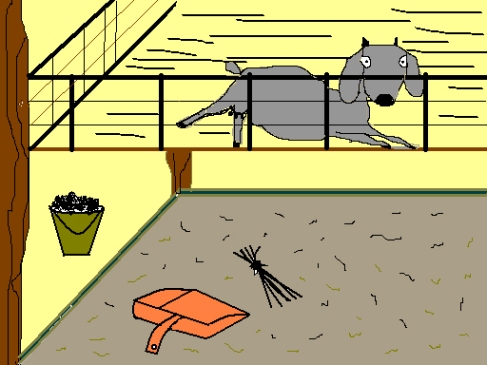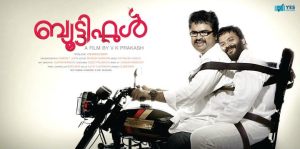I stepped on a
man. Though painful to recall it is one of the first steps toward Arunachal
that I made. It happened in one of the air-conditioned cars of the
longest-running train in India. No intruders were expected but there were
plenty of them if by intrusion one means travelling without a valid ticket.
Those were the times of the Exodus, when North-Easterners were fleeing South in
fear of life. The fat and receding eyelids always gives a pensive air to the
mongoloid face, and a morbid fear can only add to it. The train was unusually
packed, many times the capacity, with terror-stricken brethren from the North-East.
Elsewhere in India, their physique betrays them as someone very distinct from
being Indian, bordering on a Chinese ethos- a classical situation of
stranger-danger. Very often men are like herds, each one strong in one’s own
turf, feeding on mutual distrust. Geographical and ethical demarcations are too
deep-rooted in our collective psyche.
An assortment of
military and paramilitary troops is present all over the north-eastern hill
states. The staccato of rifles resound in the valleys. When one hears that one
can tell it apart from a poacher’s gunshot and the next best thing is to run
for cover. In those districts inhabited by the Naga tribes bordering Myanmar,
insurgency and counter-insurgency operations are the order of the day. These
ops include indiscriminate firing and what falls out can equally
indiscriminately be termed as casualties of war. It was only the other day that
a village was set on fire after a showdown with portable missile launchers by
two secessionist parties. Living in the districts bordering China can knock you
by the drone of fighter jets doing routine sorties or reconnaissance missions.
If you are more on the romantic side, then you can cherish the sight of a white
Himalayan crest gleaming hundreds of miles away, a sight which you can get from
Lamdeng village on the way to the friary in Veo. Nevertheless do not fail to
remember that you are in the theatre of the Himalayan Blunder and there are
still menaces lingering. Once a bunch of students admitted that they would fall
for China in the wake of an invasion. Perhaps a jest but not a good one. Given
that the youth fashion themselves around a blind imitation of the Far-Eastern
culture there is practically much to worry for the Indian mind. Arunachal is so
remote, culturally and physically. Harping on the maps from the Imperial
period, China claims entire Arunachal as theirs. In a frantic bid to expand
their soft power, China deeply infiltrates the cultural milieu of Arunachal.
This is palpable even from a cursory glance at the social shifts, attitude to
religion and disproportionate consumerism. When in Arunachal we are in a land
being torn apart on various grounds with nobody to properly tend her wounds.
Arunachal is the epitome of a neglected and exploited lot.
The inhospitable
terrain of Arunachal poses logistical nightmares which the airborne top brass
fails to notice. The Border Roads Organisation is doing a remarkable job but it
is cripple in its own rights too. It is difficult to imagine the strenuous
course and time involved in daily conveyance. The indigenous people are
accustomed to this pedestrian way of life in a degree par excellence. One will
be awestruck by the sheer weight they carry as a routine, uphill and downhill,
a course along which hauling sole body itself can be a suffocating business.
Believe me; I have seen even undernourished kids carrying bags heavier than
themselves. I should be even more reminded of this when I walk with my luggage
on comfortable and ergonomically designed bags down the aisles of a neatly
paved railway platform. The people are adept at the art of finding the shortest
(at the cost of comfort) routes to the destination (even if that involves the breaching
of a perimeter fence!) but this luxury is not possible in laying roads. By way
of example, if one boards a vehicle to the new friary in Veo from the nearest
town of Seppa and another prefers to make it on foot then the latter would
reach far ahead in time. The musculature of the indigenous people has to be a
supporting factor because they frolic in the hills like yearling sheep and are
built to survive. Our equipments and predispositions can become severely
limited when met with conventional wisdom. The sheer distances to be travelled
on backbreaking roads is one of the major difficulties in life here, that too
constantly attended by deep ravines on any one of the sides. Disaster can come
swooping down like an eagle. Well, this is a bother only if the road is open
for travel. Torrents and landslides can block the roads at leisure and leave
the lands locked, a state of natural siege, choking the arterial supply chains.
This becomes critical at the face of medical emergencies or time-sensitive
situations. There is no electricity 24X7 (if at all there is electricity), ergo
no stable communication facilities but they hardly notice because there are
more important things in life. Even as I watch the brothers coming back from a
ground zero, an ascent of few miles, after desperately waiting for hours to
capture a weak cell phone signal and to make an urgent call, I can hear the
raucous cry of ravens flying away in the early dusk from the hills to roost as
if drawing my attention to the memory of a raven that brought unsolicited
chunks of meat to Elijah in the wilderness of Judea. Remarkably, when power
supply resumes after long bouts of outage, the people welcome it with a
salutation “Jai Jesu”(Hail Jesus.)
Life in the
villages is very close-knit and dictated by tribal norms.. Arunachal is blessed
with beautiful people, scenic places, cascades, virgin forests, brooks and
birdsongs. The prominent tribes are Nyishi, Apatani, Adi and Tagin claiming
their lineage from the patriarch Abo Tani and on the eastern side the Naga
tribes of Nocte, Wancho and Tangsa. The Tani family of tribes derive their titles
from the name of their original villages but among the Naga tribes a different
convention is followed. In tribal life there are different levels of allegiance
and one’s title can become the highest determinant. Title is the strongest
signal of fraternity. Intermingling of titles can be found in urban settlements
but a village always has a predominant title. Cognomens are integral part of
existence in this part of the world and it can very often become a matter of
life and death, especially in the case of a vendetta. The tribal norms honour
the Lex talionis. Villages are
perched on hilltops and some are so far flung that one has to walk on foot for
a day to get there. The missionaries here are accustomed to such arduous
journeys in the gospel tours. People live in large bamboo houses standing on stilts.
There can be many homes within a house but each with its own fireplace. The
fireplace is central to their lives; it is the centre of familiarity and
hospitality and has two separate decks on top to facilitate curing and smoking
of foodstuff. The villagers keep poultry, pigs, and cattle but typically not
leashed. The animals move about like domesticated wild ones. The most
instructive part about living in a tribal village is that it helps us to shed
the lavatorial and gastronomic inhibitions (i.e., food and its turnouts.) The
day in a village begins very early because dawn sets in early and so too the
dusk. People are involved in hunting, gathering, scorched-earth cultivation (jhum) and wet cultivation in the fields.
Rice is the staple diet and they seldom milk cattle and consume it. One cannot
say that the diet is rich in nutrients. Toil and the deficiency of nutrients
make the people look prematurely aged. Bamboo is ubiquitous, versatile and
indispensable. Cured shoots of bamboo is an important delicacy. The village
experience is one of the best things that happened in our lives. One of the
villages was 600 years old and like any other villages had a history of
bloodshed and internecine wars and a myth of origin. Reminiscent of an
animistic past many of the villages still treasure certain monoliths which they
consider sacrosanct. Geologists are unearthing rare meteoritic rocks from many
districts. The villages have always known them but as clubs and warheads of
demons plunged down from a celestial arena. The tribal make their utensils and
artefacts out of stone, wood, gourds and bamboo. Each tribe has its unique and
distinct design of daggers, knives and swords. They are necessary for survival
in the wild and to work on bamboo and wood but can also become vicious as
rising instances of violence and murder in townships tell us. Carrying these
blades in intricately designed sheaths of bamboo is a symbol of honour.
Arunachal is
predominantly Christian but the traditional religion of nature worship, Dyoni Polo, is considerably rooted. The
societies still preserve the traditional festivals but with improvisations to
humour the Christian faith. As a matter of fact, Protestantism is deep-rooted
in the societies and it appeals more to their upbringing. Baptist and the wide
array of Revival Churches with their charismatic praise and worship, dance and
music are more palatable to the indigenous population. It would serve good for
the Catholic Church to indulge in introspection at this juncture and examine
how we fail to hit the mark. As we were opening the new friary in Veo, people
were more interested to know when a school would be opened. Nothing rides
higher than their tribal sentiments. There are lot of people who are sceptical
about the transformations Christianity has wrought in these communities. They
accuse Christians of destroying the traditions and robbing them of the pristine
innocence and community bonds. Proliferation of Protestantism is a correlate of
the rampant consumerism in these societies. For them, Catholicism is full of
incomprehensible doctrines and time-consuming rituals. Given that the
missionaries are non-indigenous and are not adept in the tribal language and
customs, people prefer lay leaders as spiritual advisors and this reeks of
dormant anti-clericalism with New Age churches stoking the fire. The people do
not fully appreciate the value of sacramental life. At least for this
generation adherence to any creed is a matter of convenience. Ironically, this
anomaly has come to a church community which suffered persecutions to preserve
the incipient faith.
In the light of
above observations, residential schools can become strong instruments of evangelization
by shaping the young minds. Education and healthcare are the keys to
evangelization in Arunachal Pradesh. Her body and mind is scarred by the
extremely demanding lifestyle she finds herself in.
When you raise
the Sacred Host and communicate it with the words “Body of Christ,” a look at
the weathered and tattered hands and faces of the people cannot but reveal to
you the Body of Christ staring at you with an unquenchable thirst.
-a sojourner in
Arunachal Pradesh, whose name is immaterial...





